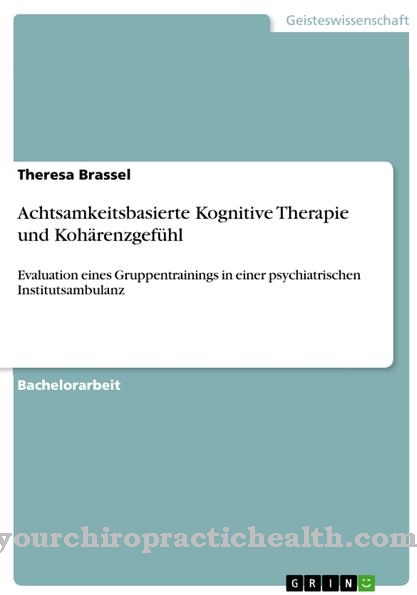Medical terminology refers to the result of a medical examination on a patient as Finding. This area includes psychological exploration, physical examination as well as laboratory and medical device examinations.
What is the finding?

The medical term finding refers to both holistic examination results and partial areas. A constellation of findings exists when several findings are found. Based on this constellation of findings, the attending physician makes the diagnosis, taking into account the anamnesis.
The anamese survey includes the questioning of the patient's health history, living conditions, any allergies that may be present, current complaints and determination of the genetic risk constellation. The findings are written down in a medical report.
The report summarizes qualitative and quantitative statements. A qualitative statement is available, for example, if the patient's findings on bronchial disease are negative, "bronchi free". A quantitative statement is, for example, the determination of the cholesterol value "total cholesterol 200 mg / dl".
Function, effect & goals
In the case of certain complaints and illnesses, detailed examinations are indicated. These examinations are carried out by specialists because general practitioners often do not have the opportunity to do them in the ordination.
These examinations are carried out, for example, as further examinations in the case of an initial suspicion of a tumor disease. A histological and a laboratory examination are necessary, carried out by specialists, radiologists and pathologists. These examinations can be, for example, microscopic examinations of samples taken. Laboratory results include test results for urine, blood and other body fluids.
In almost all medical fields, it is not possible to assess the health situation of patients without laboratory findings. The results of this laboratory examination enable doctors to make a final assessment of the state of health and to determine effective treatment options. In order to clarify the abnormalities and complaints in the patient, the family doctor refers them to a specialist using a referral slip. The result of the medical examination is the finding.
In many cases, this comes a week or two later. It will be sent to the family doctor. The general practitioner then conducts the diagnostic discussion with the patient, explains the diagnostic results and discusses the specialist suggestions on how to proceed. The histological finding provides information about the microscopic analysis of a commercial sample, a pathological finding names the pathological change in a tissue sample. Causal findings that are not related to the main disease are referred to as secondary findings.
Incidental findings appear as part of the main examination without the attending physician having specifically searched for them beforehand. A finding is positive if the examination confirms the initial suspicion. If a patient is examined for cancer and it turns out during the examination that a malignant tumor is present, the cancer result is positive. The result is negative if the examination does not confirm the initial suspicion and the patient is tumor-free. Medical terminology uses these two terms in a different way than everyday language. People associate the word “positive” with something positive, but the positive result warns that the patient's state of health is developing unfavorably and that something unusual has been found.
People associate the word "negative" with unpleasant situations, but in the event of a negative finding they have reason to be friends, because it says that the initial suspicion has not been confirmed and that the suspected disease is not present. If the doctor diagnoses a patient with AIDS, he is "HIV-positive", if the disease is not present, he is "HIV negative". The distinction from the term “symptom” is that the finding describes the empirical character of documented characteristics, i.e. the collection of information, while the symptom emphasizes the appearance of the characteristic as an indication of a disease.
For affected patients, however, a findings report can turn out to be a book with seven seals, as most people do not understand the medical terminology. They perceive these as difficult to understand, both subjectively and in technical terms. Since this technical language is part of everyday professional life for medical professionals, they often fail to take into account that their patients do not understand it in most cases.
Even if doctors are able to explain the respective findings to their patients in an easily understandable way, they may forget what has been said in their excitement and are then left alone with their findings and the incomprehensible technical language. There is a great need for easy-to-understand explanations in the report. Laypeople need a “translation” of doctors' Latin, because language that is easy to understand calms many patients down and makes even complex and worrying findings easier to bear.
Risks, side effects & dangers
Science has now discovered this disproportion and is trying to find a remedy. The University of Dresden celebrated a nationwide premiere in the 2014/2015 winter semester with the elective "What do I have?"
The project at TU Dresden was funded by the University Medicine Foundation, and the concept was conceived by medical students. The elective course aims to improve communication between doctors and patients in a practical manner. First course evaluations show significantly improved communication skills with high practical relevance. An expansion of this offer to other universities in Germany is planned.
The creation and documentation of a finding is one of the most important medical duties with regard to proof of performance in billing issues and in the case of legal disputes. Main complaints, accompanying complaints and initial suspicion lead to a suspected diagnosis, which leads to the targeted assessment and the work diagnosis. The subsequent treatment and therapy of the disease are based on the findings.
Structured documentation of findings supports the cooperation and communication between the participating doctors, patients, institutions and clinics. The development of telemedicine supports this structured approach sustainably. Standardized findings are easier to compare and the course of the disease can be better assessed. The risk of misunderstandings between the doctors involved is largely eliminated. According to Section 630 of the German Civil Code, the law on patient rights obliges doctors to keep a patient file with all relevant findings and information.









.jpg)



.jpg)



.jpg)







.jpg)


